Adresse
Infodoc : Réseau des bibliothèques et centres de documentation d'AgroParisTechFrance
contact

Catégories
|
RAMEAU , Nom commun , Aliments -- Analyse sensorielle
Aliments -- Analyse sensorielleSynonyme(s)Aliments -- Appréciaton sensorielle ;Aliments -- Dégustation ;Aliments -- Propriétés organoleptiques ;Analyse organoleptique des aliments ;Dégustation (aliments) ;Propriétés gustatives des aliments ;Propriétés organoleptiques des aliments Qualités organoleptiques |
Documents disponibles dans cette catégorie (63)
 Ajouter le résultat dans votre panier
Visionner les documents numériques
Faire une suggestion Affiner la recherche Interroger des sources externes
Ajouter le résultat dans votre panier
Visionner les documents numériques
Faire une suggestion Affiner la recherche Interroger des sources externes
 Livre
Livre978-3-900932-57-21 vol. (376 p.)
1 vol. (376 p.)ISBN : 978-3-900932-57-2 
 Livre250
Livre250978-2-87777-408-61 vol. (191 p.)
1 vol. (191 p.)Prix : 250 ISBN : 978-2-87777-408-6 
 Livre
Livre978-3-030-32951-81 vol. (314 p.)
1 vol. (314 p.)ISBN : 978-3-030-32951-8 
 Livre150 F
Livre150 F2-87894-025-3176 p.
176 p.Prix : 150 F ISBN : 2-87894-025-3 
 Thèse1 vol. (302 p.)
Thèse1 vol. (302 p.)
1 vol. (302 p.)
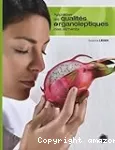 Livre
Livre978-2-89470-318-21 vol. (520 p.)
1 vol. (520 p.)ISBN : 978-2-89470-318-2 
 Livre
Livre978-2-85206-613-71 vol. (438 p.)
1 vol. (438 p.)ISBN : 978-2-85206-613-7 
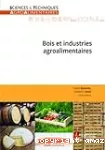 Livre35 EUR
Livre35 EUR978-2-7430-2489-51 vol. (XX-167 p.)
1 vol. (XX-167 p.)Prix : 35 EUR ISBN : 978-2-7430-2489-5 
 Thèse
Thèse
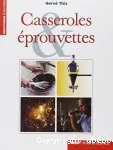 Livre19.95 EUR
Livre19.95 EUR978-2-84245-039-71 vol. (240 p.)
1 vol. (240 p.)Prix : 19.95 EUR ISBN : 978-2-84245-039-7 
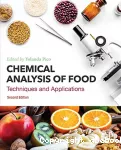 Livre
Livre978-0-12-813266-11 vol. (XVI-889 p.)
1 vol. (XVI-889 p.)ISBN : 978-0-12-813266-1 
 Thèse
Thèse
 Thèse
Thèse
 Thèse
Thèse
 Livre
Livre978-2-85206-989-31 vol. (XX-705 p.)
1 vol. (XX-705 p.)ISBN : 978-2-85206-989-3 
 Thèse1 vol. (pagination discontinue)
Thèse1 vol. (pagination discontinue)
1 vol. (pagination discontinue)
 Thèse1 vol. ([4]-131-[15] p.)
Thèse1 vol. ([4]-131-[15] p.)
1 vol. ([4]-131-[15] p.)
 Livre95 EUR
Livre95 EUR978-2-7430-1367-71 vol. (XXXV-472 p.)
1 vol. (XXXV-472 p.)Prix : 95 EUR ISBN : 978-2-7430-1367-7 
 Mémoire
Mémoire
 Livre24 EUR
Livre24 EUR978-2-247-06836-4XVI-283 p.
XVI-283 p.Prix : 24 EUR ISBN : 978-2-247-06836-4 
 Mémoire
Mémoire
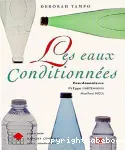 Livre
Livre978-2-85206-801-81 vol. (XV-175 p.)
1 vol. (XV-175 p.)ISBN : 978-2-85206-801-8 
 Livre
Livre978-3-030-22521-61 vol. (XIV-120 p.)
1 vol. (XIV-120 p.)ISBN : 978-3-030-22521-6 
 Thèse
Thèse
 Mémoire
Mémoire
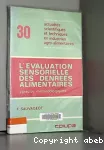 Livre
Livre978-2-85206-172-91 vol. (XII-195 p.)
1 vol. (XII-195 p.)ISBN : 978-2-85206-172-9 
 Livre95.00 EUR
Livre95.00 EUR978-2-7430-0997-71 vol. (XXVII-524 p.)
1 vol. (XXVII-524 p.)Prix : 95.00 EUR ISBN : 978-2-7430-0997-7 
 Livre
Livre978-0-12-814217-21 vol. (XXII-860 p.)
1 vol. (XXII-860 p.)ISBN : 978-0-12-814217-2 
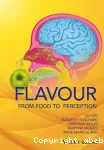 Livre
Livre978-1-118-92941-41 vol. (XVII-400 p.)
1 vol. (XVII-400 p.)ISBN : 978-1-118-92941-4 
 Livre
Livre978-1-138-33824-11 vol. (XVIII-726 p.)
1 vol. (XVIII-726 p.)ISBN : 978-1-138-33824-1 
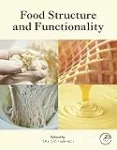 Livre
Livre978-0-12-821453-41 vol. (XIII-253 p.)
1 vol. (XIII-253 p.)ISBN : 978-0-12-821453-4 
 Thèse1 vol. (221 p.)
Thèse1 vol. (221 p.)
1 vol. (221 p.)
 Livre158 EUR
Livre158 EUR978-2-7430-0891-81 vol. (XXXI-891 p.)
1 vol. (XXXI-891 p.)Prix : 158 EUR ISBN : 978-2-7430-0891-8 
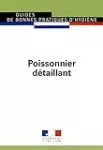 LivreConfédération générale de l'alimentation en détail (CGAD) ; Fédération nationale des syndicats professionnels du commerce de poisson et de la conchyliculture (FNSPCPC)
LivreConfédération générale de l'alimentation en détail (CGAD) ; Fédération nationale des syndicats professionnels du commerce de poisson et de la conchyliculture (FNSPCPC)978-2-11-076986-21 vol. (II-198 p.)
1 vol. (II-198 p.)ISBN : 978-2-11-076986-2 
 Livre
Livre978-2-7430-0123-01 vol. (XIX-819 p.)
1 vol. (XIX-819 p.)ISBN : 978-2-7430-0123-0 
 Livre
Livre978-0-12-812002-61 vol. (XV-323 p.)
1 vol. (XV-323 p.)ISBN : 978-0-12-812002-6 
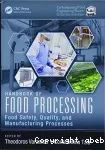 Livre
Livre978-1-4987-2177-61 vol. (XX-659 p.)
1 vol. (XX-659 p.)ISBN : 978-1-4987-2177-6 
 Thèse
Thèse
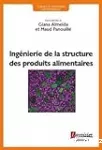 Livre
Livre978-2-7462-4870-01 vol. (VIII-168 p.)
1 vol. (VIII-168 p.)ISBN : 978-2-7462-4870-0 
 Livre
Livre978-2-85206-071-5381 p.
381 p.ISBN : 978-2-85206-071-5 
 Livre
Livre978-0-08-100694-81 vol. (XVI-713 p.)
1 vol. (XVI-713 p.)ISBN : 978-0-08-100694-8 
 Thèse
Thèse
 Thèse
Thèse
 Livre
Livre978-0-08-101743-21 vol. (XVIII-478 p.)
1 vol. (XVIII-478 p.)ISBN : 978-0-08-101743-2 
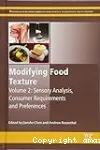 Livre
Livre978-1-78242-334-81 vol. (XXVI-277 p.)
1 vol. (XXVI-277 p.)ISBN : 978-1-78242-334-8 
 Livre49 EUR
Livre49 EUR978-2-7430-2274-71 vol. (XX-459 p.)
1 vol. (XX-459 p.)Prix : 49 EUR ISBN : 978-2-7430-2274-7 
 Livre
Livre978-2-7430-0507-81 vol. (XXIX-371 p.)
1 vol. (XXIX-371 p.)ISBN : 978-2-7430-0507-8 
 Livre
Livre978-2-85206-903-91 vol. (XXIII-344 p.)
1 vol. (XXIII-344 p.)ISBN : 978-2-85206-903-9 
 Thèse
Thèse
 Livre8,90 EUR
Livre8,90 EUR978-2-10-083428-01 vol. (232 p.- [32] p. de pl.)
1 vol. (232 p.- [32] p. de pl.)Prix : 8,90 EUR ISBN : 978-2-10-083428-0 
 Livre21 EUR
Livre21 EUR978-2-88915-256-81 vol. (380 p.)
1 vol. (380 p.)Prix : 21 EUR ISBN : 978-2-88915-256-8 
 Livre
Livre978-2-7430-0118-61 vol. (404 p.)
1 vol. (404 p.)ISBN : 978-2-7430-0118-6 
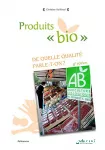 Livre25 EUR
Livre25 EUR979-10-275-0142-71 vol. (220 p.)
1 vol. (220 p.)Prix : 25 EUR ISBN : 979-10-275-0142-7 
 Livre
Livre978-3-030-27133-61 vol. (IX-413 p.)
1 vol. (IX-413 p.)ISBN : 978-3-030-27133-6 
 Livre
Livre978-0-12-819741-71 vol. (XI-334 p.)
1 vol. (XI-334 p.)ISBN : 978-0-12-819741-7 
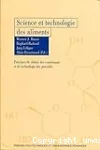 Livre69.50 EUR
Livre69.50 EUR978-2-88074-754-11 vol. (XII-720 p.)
1 vol. (XII-720 p.)Prix : 69.50 EUR ISBN : 978-2-88074-754-1 
 Mémoire
Mémoire
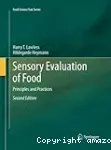 Livre
Livre978-1-4939-5039-31 vol. (XXIII-596 p.)
1 vol. (XXIII-596 p.)ISBN : 978-1-4939-5039-3 
 Livre
Livre978-1-4822-1690-51 vol. (XXIX-600 p.)
1 vol. (XXIX-600 p.)ISBN : 978-1-4822-1690-5 
 Thèse
Thèse
 Livre24 EUR
Livre24 EUR978-2-84444-879-81 vol. (298 p.)
1 vol. (298 p.)Prix : 24 EUR ISBN : 978-2-84444-879-8 
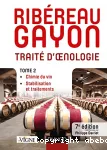 Livre125 EUR
Livre125 EUR978-2-10-076561-41 vol. (XXIV-616 p.)
1 vol. (XXIV-616 p.)Prix : 125 EUR ISBN : 978-2-10-076561-4 
 Thèse1 vol. (142 p.)
Thèse1 vol. (142 p.)
1 vol. (142 p.)





